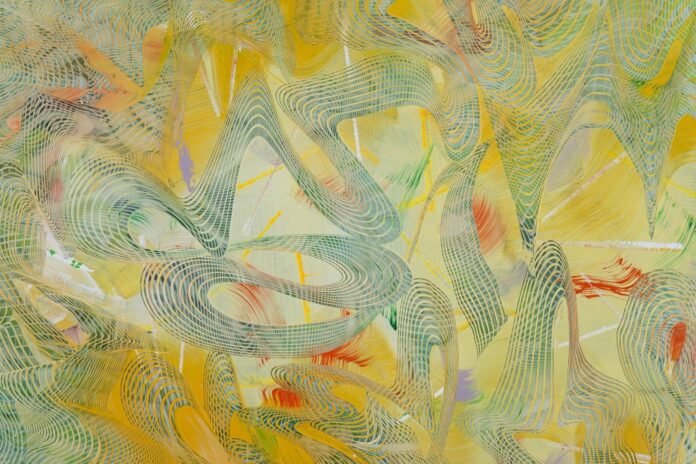The abstract paintings of artist Lorene Anderson are an exploration of shifting space. Imagine air currents and soundwaves captured in living color. Forms of subatomic particles and cosmological matter, even mobile data, defined as light.
“I think about science, the cosmos, human physiology, landscape, sense of place, and chaos. I’m not illustrating these subjects but channeling them onto the 2D surface. All my layers of lines reference energy, time, and a neurological or cardiovascular system, simultaneously. Thinking about time being layered with parallel realities and universes has fascinated me for decades,” Anderson told 48hills.
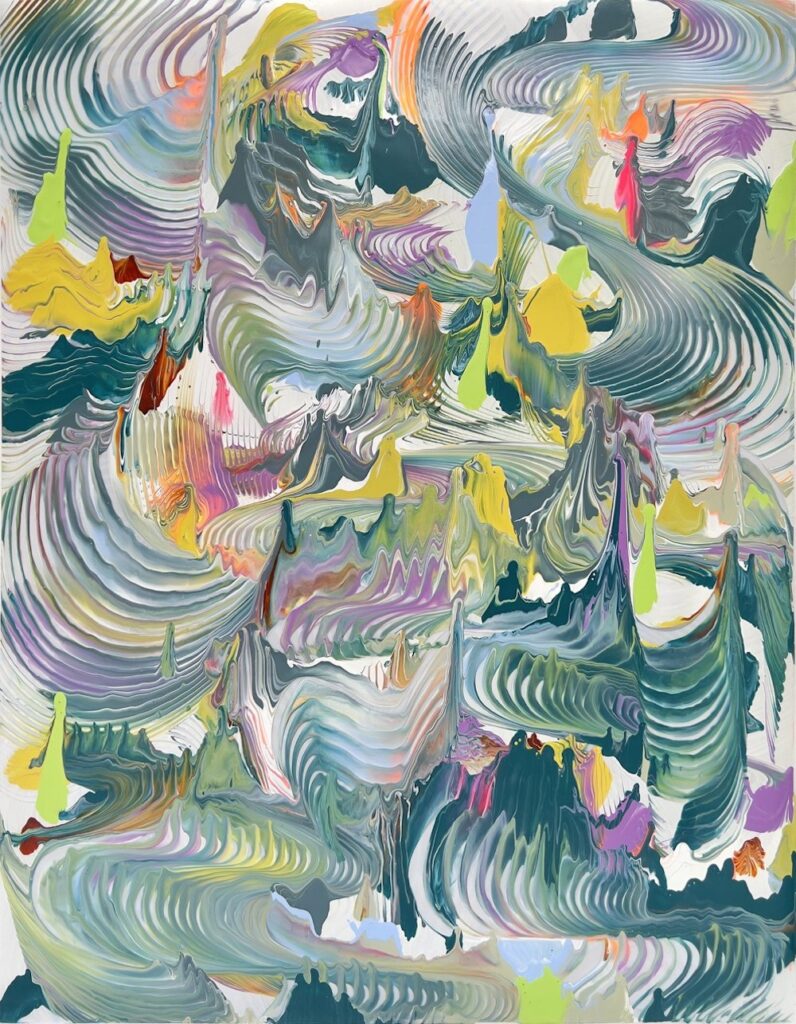
Anderson was born in Manhattan, Kansas, a few days after a major tornado, and lived there for only one year while her father finished his PhD in chemistry. He got a job and moved the family to Ohio, then several years later, to West Virginia. She attended Miami University in Oxford, Ohio (BFA in Painting and Metalsmithing, 1988), then moved to the Bay Area for graduate school (MFA, Painting, UC Berkeley, 1990). She currently lives in Adams Point near Lake Merritt in Oakland.
“I thought I’d end up moving to New York. But I loved the light here, the proximity to ocean and nature, the open, trail-blazing spirit of the Bay Area, and stayed,” she said.
Inside her studio in West Oakland, in a large warehouse near the McArthur maze, Anderson is experimenting and finding new ways of artmaking. She says she aims to keep moving forward and progressing in her work, both conceptually and aesthetically.
“I try to push the boundaries and explore the limits of acrylic paint as well as traditional practices of painting,” she said.
The space features a large rolling table covered with tubs of wet, mixed acrylic colors, and concoctions. The tools of her trade include brushes in various sizes, a few carved squeegees, and other handmade tools for drawing and removing paint. The sizes of her paintings range from “mini to monstrous” and demand a range of physical motion, whether it be partial or full body engagement, as she works. Music is important. It assists in maintaining a contiguous flow to her work.
“For a painting or series I’m working on, I try to listen to the same playlist or artist to get back into that same mindset or train of thought to pick up where I left off during a previous painting session,” she said.
Anderson is inspired by artists across history, but on this particular day she cites Swedish artist and mystic Hilma Af Klint (1862-1944) as having had an impact on her work.
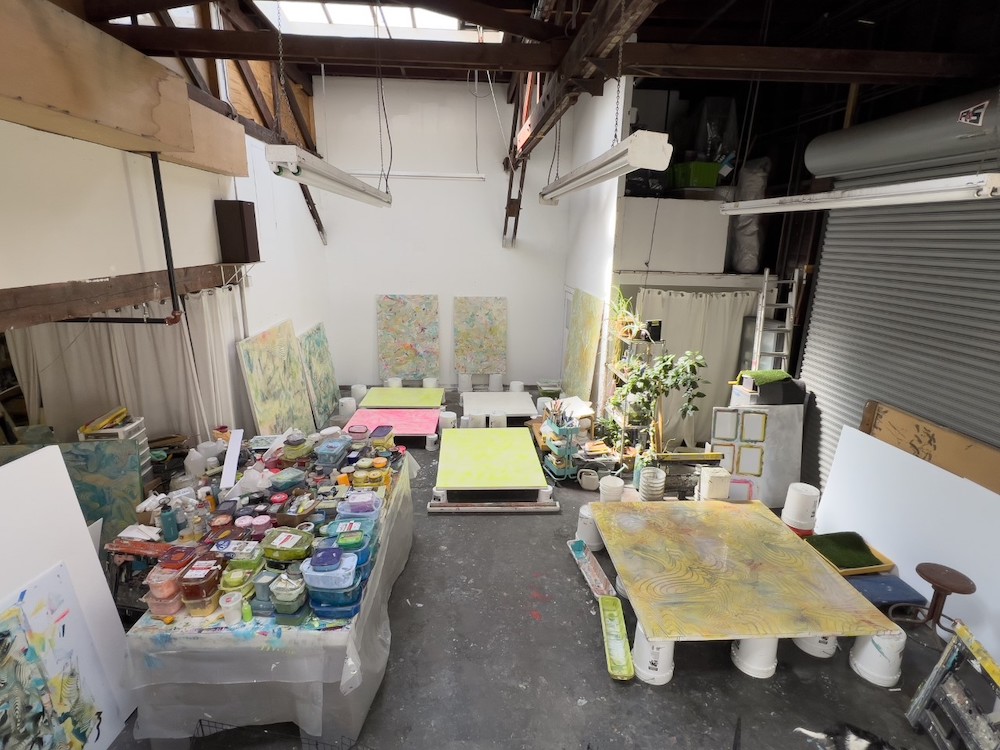
“Her 2019 show at the Guggenheim in New York had a profound, lasting effect on me. Her linear abstract forms and colors, how she straddles natural and scientific influences with abstraction and intuition, are amazing,” Anderson said.
The size of her studio and its amazing illumination, provided through two large skylights, have had a great influence on the evolution of her work. Large paintings are worked on while flat, propped up on buckets or sawhorses. Sequences of layering can take quite a while to dry, requiring her to work on multiple paintings simultaneously to make progress.
“Pouring and staining became my first step as a student. I wanted to break the white plane of the canvas and have something to work against. I became more interested in what was happening with my staining process. I became interested in random patterns and self-organizing systems, using those concepts in my practice,” she said.
After that period of study, the paintings gradually became more representational, for example, tree branches were knotted, made up of dots, or twisted in mathematical patterns.
“The patterns of tree branches came by way of linear drips and runs from pouring and maneuvering the canvas to let paint run free and create its own lines and patterns. I strove to break free from my learned mark making and started making ink drawings by rolling wet marbles across paper and letting chance dictate composition or by spraying dots on paper and connecting them with long, wispy, wet brushes,” Anderson said.
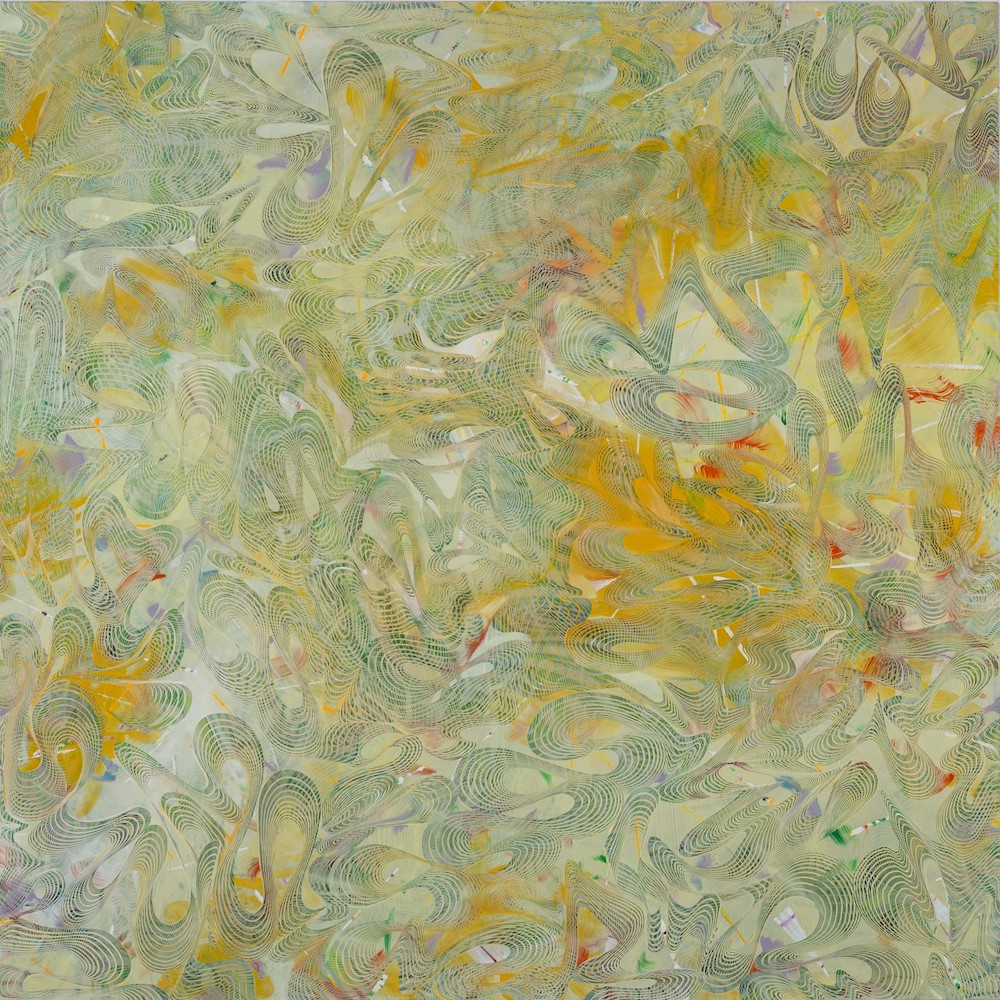
Next, she began to explore how science intersects with literature. Thinking about cities as self-organizing systems led her to a series of abstract paintings based on the book Invisible Cities by Italo Calvino. She developed a large body of work based on the idea of floating sky cities, still using pouring and staining in her process. One painting, “Baucis,” from this series, was purchased for the public library in Walnut Creek.
The next phase of this arc was during a residency at La Porte Peinte, in the medieval city of Noyers sur Serein, France. There, Anderson experimented with new tools that had an immediate impact on her work.
“I purchased antiquing brushes and grouting tools in specialty and hardware stores and started experimenting with stripes—drawn and/or scraped. The influence of being in France surrounded by the bendy stripes of the vineyards and fields of barley, the layers of time, and being in a medieval town—literally being on top of layers of history—fed my fascination with layering of time and space as well as theories on parallel realities,” she said.
Which brings us to her current work: a continuation in the manipulation of cosmological themes through techniques developed over time, a bending of dimensional space into churning, vibrating compositions at once gestural, linear, conceptual, and multi-layered.
“I am increasingly fascinated with how paint moves and self-organizes. My impulse is to let it free, by using gravity and force to release the pent-up energy within the linear beads of pulled paint into unexpected blasts and bursts of color and form,” Anderson said.
Wet, painted stripes surge and break into an organized chaos of marks and pigment. In some way, Anderson says, she finds that the wet, surging paint is also mimicking the power of earth’s forces.
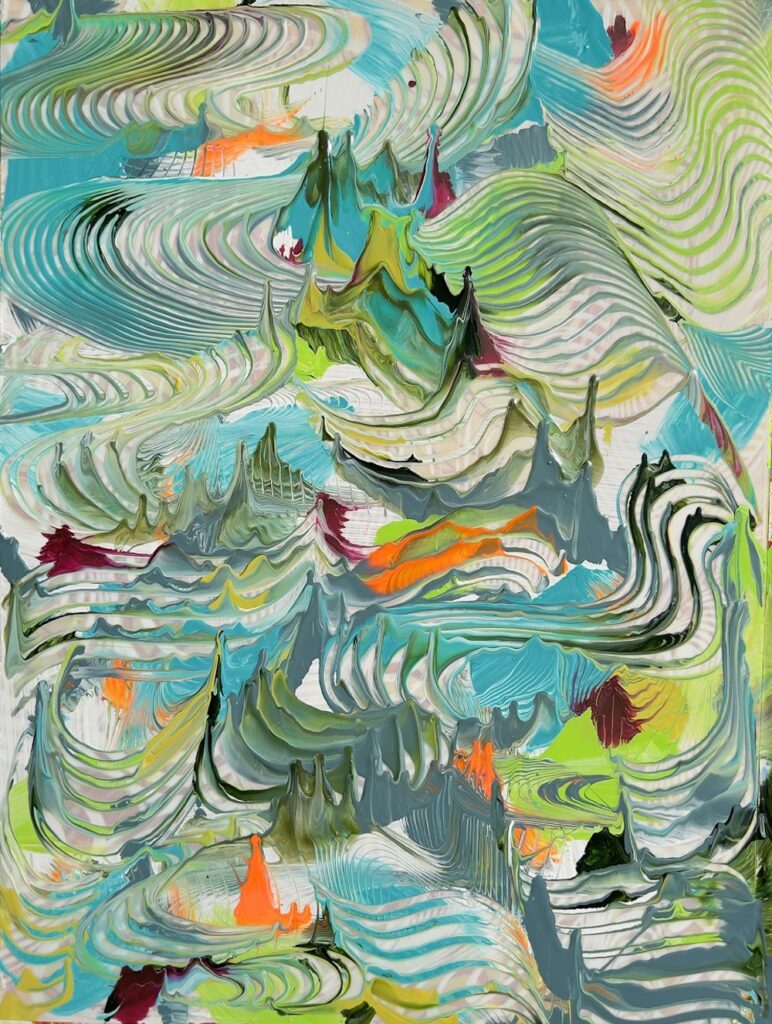
“I’m guiding the paint, but the work exists between chance and intent. It’s important to let these paintings take on their own seemingly random direction and find the right balance of discipline and unruliness,” she said.
Much of her new work is painted on both sides of translucent, synthetic paper, giving a sense of swirling lines behind the top surface of paint. Occasionally, Anderson also paints on mirrored surfaces to incorporate the reflected space around and behind the viewer.
Anderson recently acquired representation by Scott Richards Contemporary Art in San Francisco, where she will exhibit in May at their new location in Jackson Square. Additionally, she is in a group show with the Art in Embassies program at the US embassy in Botswana. Other recent shows include inclusion in “About Abstraction, Bay Area Women Painters” at the Bedford Gallery, Walnut Creek and the Art Faculty and Alumni (selected) Exhibition, at Miami University Art Museum, Oxford, Ohio.
Lorene Anderson wants us to feel a sense of time and place. She wants us to get lost in her work, to allow our eyes to meander through the composition just as we might meander on a trail through a forest.
“With my references to landscape, it’s hard not to encourage thoughts about climate change, our place in the world and how we affect our environment,” she said.
For more information, visit her website at lorenanderson.com and on Instagram.


